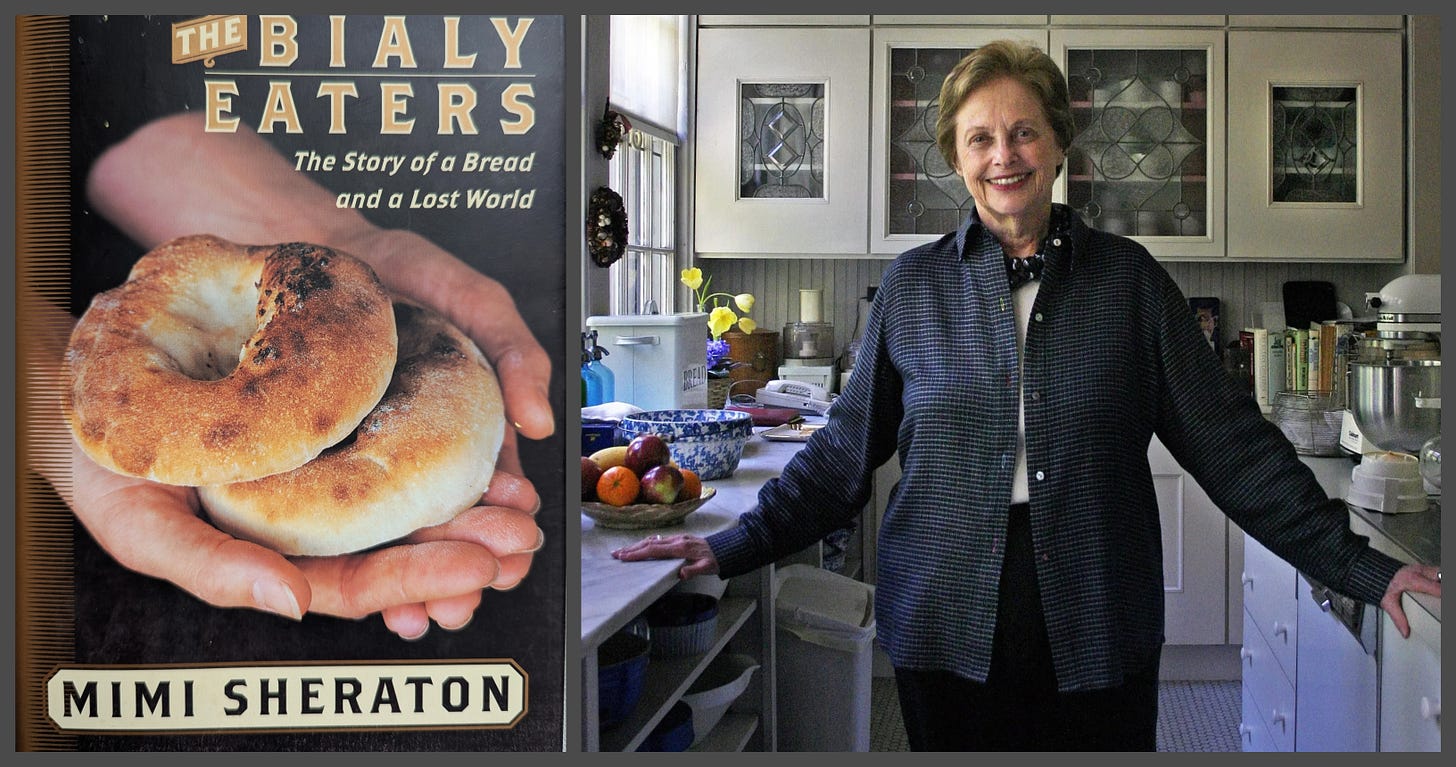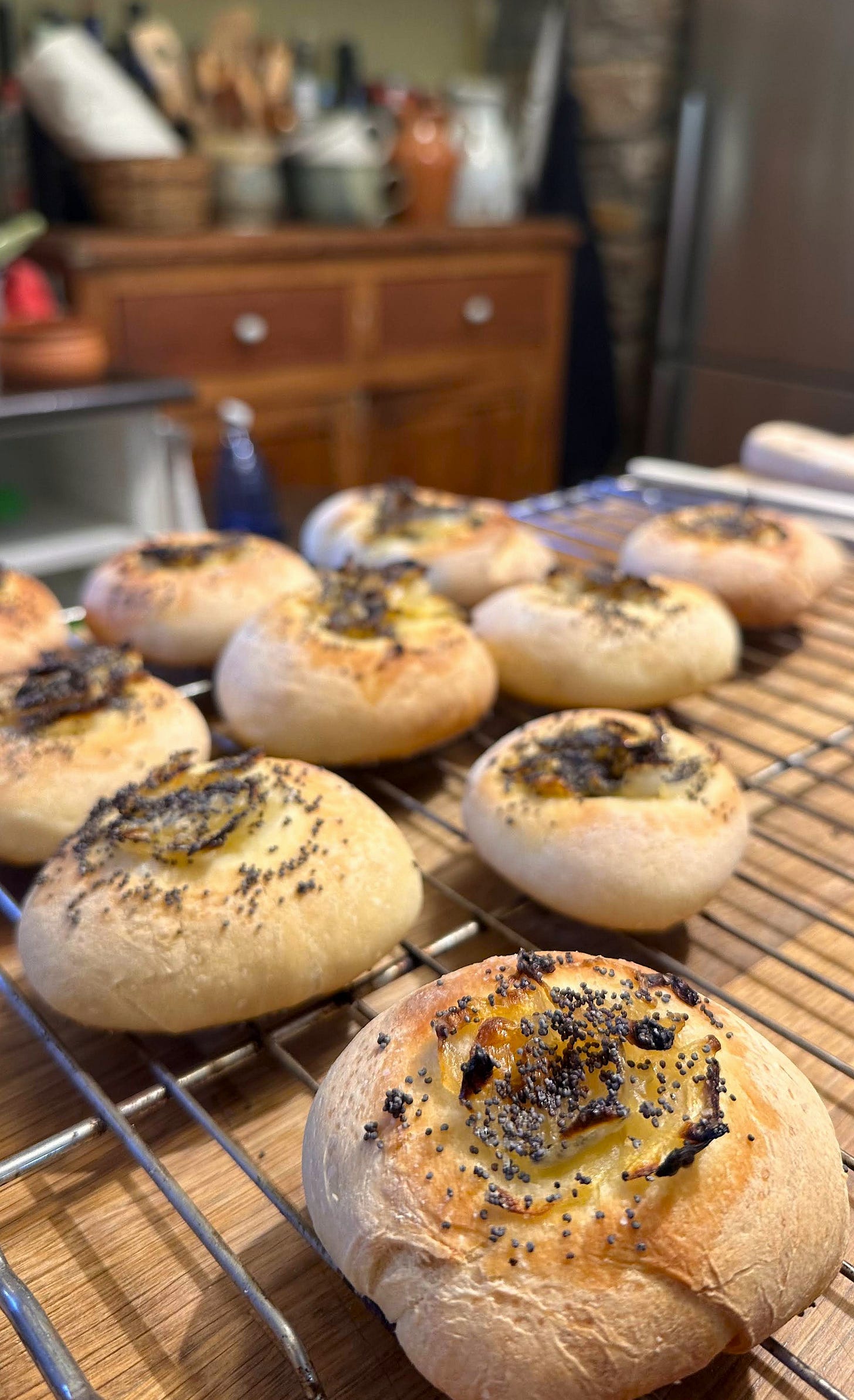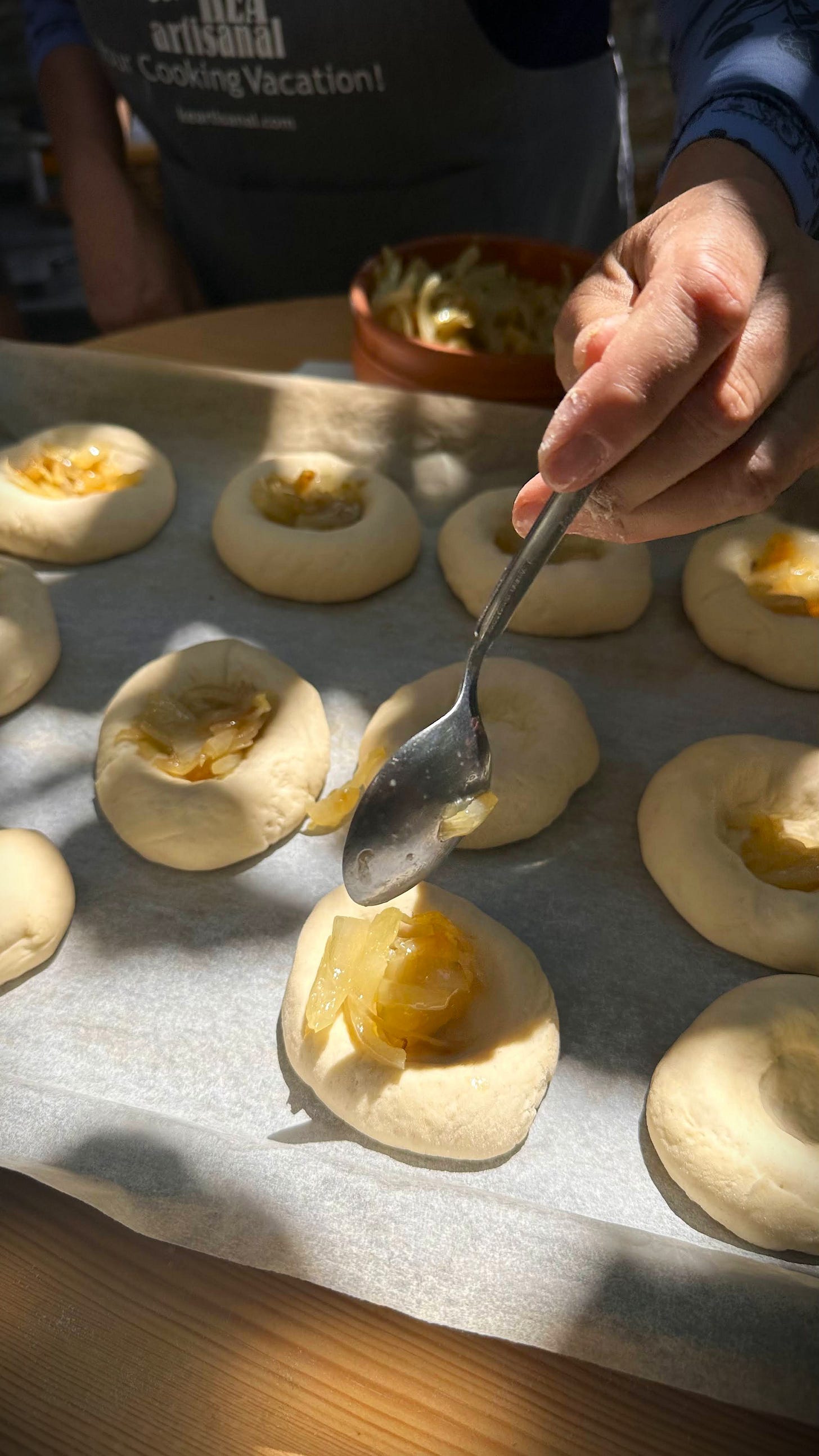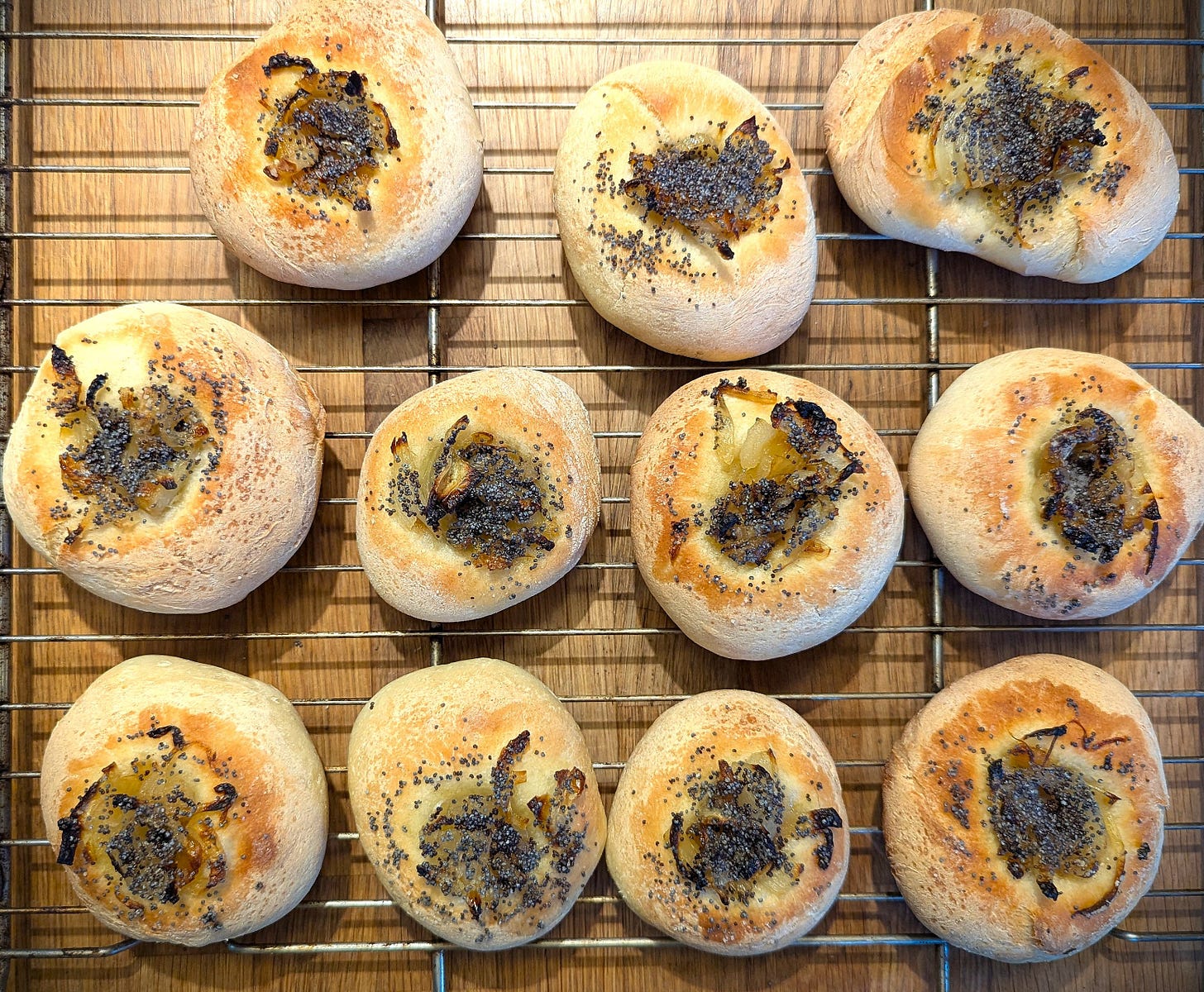We Love Bialys!
These delicious breads, simply topped with onion and poppyseeds, carry with them the heartbreaking history of a 'lost world,' as Mimi Sheraton described in her wonderful book.
I ate bialys for the first time in the 1980ies, on the Lower East side of Manhattan, of course, and loved them. I couldn’t understand why they were not all over the city, as bagels were. For me these simple breads topped with onion and poppyseeds were far more delicious!
During the Kea Artisanal bread-baking day last week, with our wonderful guests, the Ross family, Alison Ross mentioned bialy, and I suddenly felt a tremendous crave for them, mixed with sorrow as I recalled the wonderful times Costas and I had spent with our dearest friend, the late Mimi Sheraton each time we visited New York.

The fascinating book “Bialy Eaters: the story of a bread and a lost world” was the result of Mimi’s tireless research that started from Bialystock, in northeastern Poland. The breads’ original name was Bialystock kuchen (‘breads from Bialystock,’ in Yiddish) but in that dreary town Sheraton found no trace of them, as there were hardly any Jews left to bake them.
The very few Auschwitz survivors were murdered by ‘Polish mobs’ as she was told. Some locals even suggested that bialys were a New York invention(!) But, as she wrote “there is even a visual proof of the bialys existence in the documentary Jewish Life in Bialystock, produced in the crucial year of 1939 and distributed by the National Center for Jewish Life.”
Mimi was a brilliant journalist, a persistent, and tireless researcher —not merely the critic ‘who had eaten 21,170 restaurant meals professionally in 49 countries,’ as the NY Times wrote in her obituary. By publishing her initial bialy research in some magazines, both in English and in Yiddish, she got a tremendous amount of responses from Jews whose families originated in Bialystock and were now scattered all over the world. A few claimed that their ancestors were the original creators of the breads, in the mid 19th century (!)
Baking Bialys on Kea
Bialys, of course, are not the Greek or Eastern Mediterranean breads, like the zaatar-topped lagana or koulouria (sesame-studded bread rings) which we usually bake here with our guests; but I suggested we bake some as I consider them not much different from mini Italian focaccias or our vegetable-topped laganes (flat breads).
Maybe the reason they are not hugely popular in the US is their brilliant simplicity: they are not laden with butter, and lack the copious amounts of melted cheese everybody seems to adore these days. The caramelized, olive-oil-sauteed onions and the few poppyseeds cannot compete with the popular spicy sausage mini pizzas or the bite-size quiche with bacon and cream…
The recipe Alison suggested we use was published by Pete Andrews “a 25-year-old living in Washington DC and working in northern Virginia,” who writes that “simply put, most of my income goes to flour, sugar and butter.” In the recipe’s head-note he writes “bialys are a food that just begs to be experimented on and tried with different fillings. What if I cracked an egg in the middle? added bacon? sausage? bacon and sausage? and cheese? this is going to be good.” Well, in our humble opinion, bialys don’t need any addition. They are perfect the way they are.
Next time, though, I will use the King Arthur recipe, as it has less yeast than Pete adds. Less puffy, the bialys will be closer to the ones I tried at the historic Kossar’s bakery, in the Lower East Side of Manhattan.
PS: A Lunch with Mimi
During one of our NY meetings, probably around 2000, Mimi had taken us to the then newly opened Pastis restaurant in the Meatpacking district —long before the area became so terribly trendy. She loved it, and kept explaining how the creator, Keith McNally, had brough or meticulously copied the mirrors, tiles, bar etc. from traditional Parisian brasseries.
As it happens, I am now deep into McNally’s fascinating memoir I regret almost everything, where he describes in detail his troubles while creating Pastis, after his instantly popular Odeon…





Blogger Pete posted his recipe in 2009 and credited it to "Artisan Bread in 5 Minutes a Day." Another version of bialys appears in Rose Levy Berenbaum's excellent "The Bread Bible." She uses only 1 tsp. of yeast and shares a tip from Kossar's Bagels and Bialys: make a tiny hole in the center of each bialy to prevent the center from puffing up while baking.